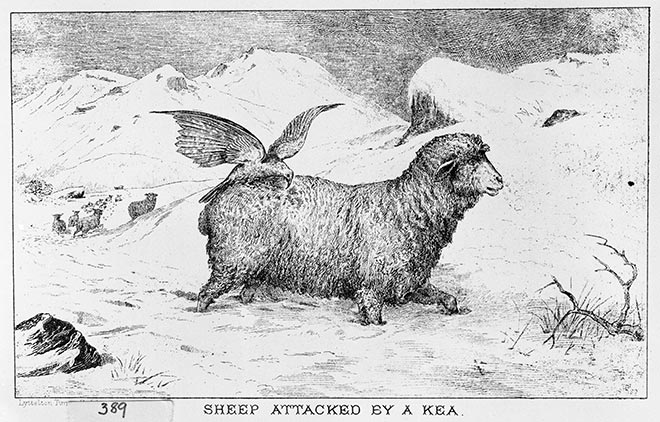
This drawing, published in the Lyttelton Times in 1882, shows a kea riding on the back of a sheep. Kea had a reputation for pecking through the fleece and skin to take fat from around a sheep’s kidneys. While this might not kill the animal immediately, often a fatal blood infection followed. During a series of hard winters when sheep often died by foundering in snow or starving to death, some farmers pinned the blame on kea. To appease this important voting lobby, a bounty was placed on the birds, leading to a heavy reduction in their numbers.
Te whakamahi i tēnei tūemi
Alexander Turnbull Library, Making New Zealand Centennial Collection (PAColl-3060)
Reference:
PUBL-0223-184
Permission of the Alexander Turnbull Library, National Library of New Zealand, Te Puna Mātauranga o Aotearoa, must be obtained before any re-use of this image.







Tāpiritia te tākupu hou